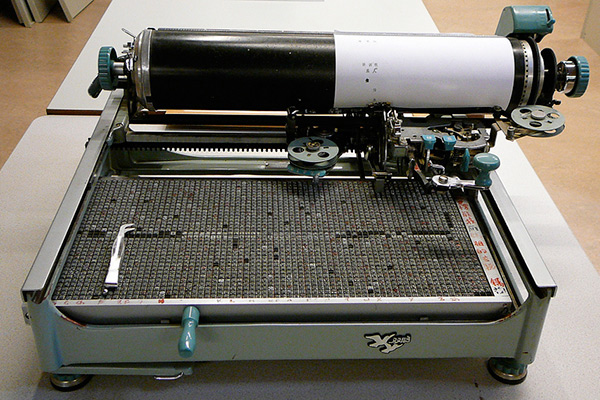I don’t care if they’re real. I’m just grateful for the texting fails collected on DamnYouAutocorrect. Maybe a guy really did offer to cook his girlfriend “chicken vaginas” instead of chicken fajitas; maybe a mom described her toddlers as having “pornstaches” instead of milkstaches in their Christmas photos; maybe a dad told his kids that his wife’s allergic reaction was treated with an “epic penis” instead of an EpiPen. Or maybe not. Either way, my inner copyeditor and my inner potty-mouthed teenager, normally not even on speaking terms, are collapsing against each other, embracing as they weep with laughter.
So I was fascinated by the recent news that embarrassing autocomplete errors probably predate the iPhone. In fact, they probably predate the computer. And they very likely didn’t start in the Western world.
Thomas Mullaney, a history professor at Stanford and — surely — the world’s only expert on the Chinese typewriter, recounts in a recent paper that in late 1956, a Chinese typist named Zhang Jiying made national news. Zhang had typed 4,730 characters in an hour, about four times the average speed at the time, and the state press trumpeted the feat as yet another achievement by a Mao-era “model worker.” 
His real achievement, however, had little to do with agile fingers or sustained effort: Zhang and his fellow typists were tweaking existing typewriter technology, gradually creating something akin to an autocomplete function.
Chinese typewriters, which first appeared in the 1910s, had tray beds packed with some 2,500 separate character slugs; typists selected, inked, and lifted each metal slug via a moveable lever. The characters were grouped by frequency of use, but arranged alphabetically within those groups. Zhang’s innovation was to reorganize his characters into clusters that tended to occur together. (While the strategy was probably prone to autocomplete-type errors, the advantages of its speed must have outweighed any typographical risk, and it stuck; today’s Chinese word-processing software uses a similar approach.)
After Zhang’s famous typing sprint, Mao-era typists continued to arrange and rearrange their character trays according to their individual preferences and the work at hand, which often involved typing speeches and pamphlets for the regime. As a result, character-bed arrangements became bits of political history, reflecting the rise and fall of Communist slogans and word choices, and the consequences of the patterns were far darker than those of any autocorrect gaffe. Mullaney reflects:
What we encounter in certain Maoist-era machines was the development of a practically infinite number of deeply personal pathways to a singularity most commonly thought of through the dystopian metaphor of “newspeak” … what became possible was, ironically, an ever more tight-fitting, personal connection and commitment to the rhetorical apparatus of Maoism.
Which makes me wonder how the modern autocomplete and correct functions affect our communication. While we’re thankfully free from explicit, government-imposed newspeak, autocorrect does adapt to the vocabulary of each user, remembering our favorite words in order to refine its guesses. By doing so, could autocorrect also subtly reinforce our existing conversational tics, making us more predictable texters and speakers? If so, that’s one more reason to give thanks for its occasional side-splitting errors: at least they keep us interesting. Pass the chicken vaginas.
Top image from, obviously, DamnYouAutoCorrect.com.
Chinese typewriter photo courtesy of Stanford University. Creative Commons.

My mom once almost sent a text to my grandma that said “We are heterosexual and round.” I forget what she was actually trying to type — maybe an update on where they were in their travels. But that’s not what came out. Of course, she realized before she hit send and corrected it. I laugh thinking about how my grandma would have reacted. Maybe a “good for you!” or an “I’m so proud!”
I love it! (What if she’d responded, “Um … how about one out of two?”)